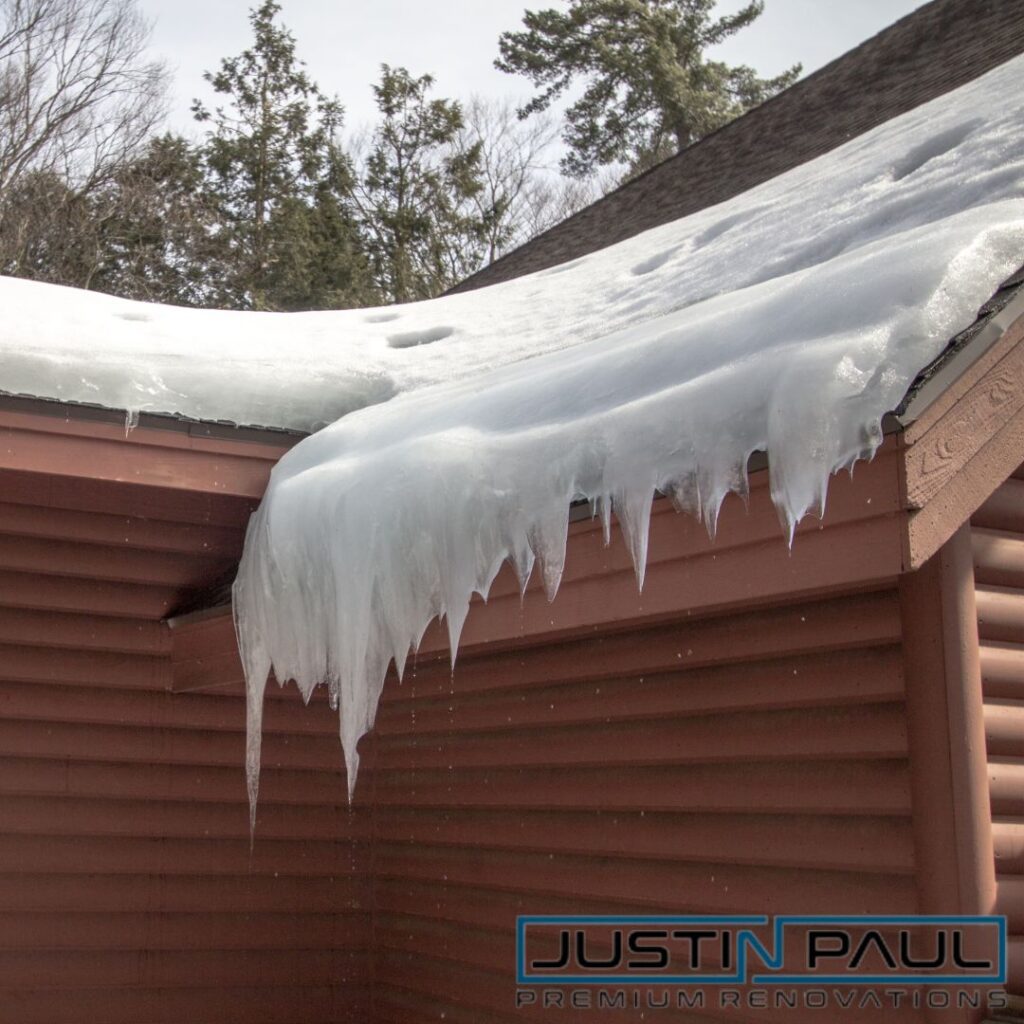Hey everyone,
With the cold months slowly creeping closer I wanted to create a post about an issue that I helped a lot of homeowners with last winter. It’s not something that gets talked about a lot but it can cause some serious damage:
Ice dams
An ice dam is a ridge of ice forming at the roof’s edge and prevents melting snow from draining. Typically they happen when heat from your house causes the snow on your roof to melt. The water runs down the roof and then freezes again when it hits the cold metal of the gutter creating a wall of ice.
The ice builds up quicker than you think and the water that backs up behind the dam can leak into your home, causing damage to walls, ceilings, insulation, and other areas.
The good news is there is still time to prep your house now so you don’t have to spend your holidays trying to figure out why your ceiling is dripping water.
Tips to prevent ice dams
Improve your attic insulation
Not many people realize just how much insulation an attic needs in order to prevent heat loss.
I typically suggest that you should be using at least 12-14 inches from the floor of the attic.
Customers often ask me what kind of insulation is best for the attic and honestly, I think that fibreglass batt insulation is absolutely fine. Unless you have an attic that doubles as a living space of some kind then fibreglass batt is the most cost-effective solution. If, however, you do spend time in your attic then I would definitely recommend creating a wall or seal between the living space and insulation to avoid any health issues from prolonged exposure to insulation vapours.
One thing to be aware of with fiberglass batt is that if it gets wet it loses its insulating capacity very quickly and it will need to be replaced. But, this quality can also be very helpful. If you are re-insulating your home this year you can look for areas where the insulation seems damp or depleted. This will most likely signify a place where there was a leak last winter.
If you are on a budget, definitely start by insulating above areas of the house that will experience the most heat like the kitchen and bedrooms, leave that garage for last.
Seal air leaks
Even with great insulation, air leaks can sabotage your efforts. Warm air from your home can escape into the attic through gaps around things like vents, chimneys, or even recessed lighting. Finding and sealing these leaks is key to stopping ice dams in their tracks.
To find these leaks you can do a visual inspection of your attic. I find it helps to do it at night with the lights in the attic turned off so that any potential leak will also have light coming through it from the house below. This is especially useful when examining the access panel to the attic itself. Access panels typically don’t seal very well and people often forget to check them for leaks (just make sure you are able to get out before you close the panel on yourself).
Other places you should look include:
- Near electrical cables
- Recessed lighting
- Piping or vents
- Chimneys
There are of course special tools like ultrasonic air leak detectors that can help find leaks, most contractors use them. The DIY method of this is to seal all the doors and windows in your house then carry a piece of lit incense along the contours of the space. The smoke from the incense will either get blown in or sucked out when it comes into contact with a leak. Once you locate a leak you can apply caulking to patch it.
Calling in the contractors
So if you are in a situation where you did all of the above last year you still experienced ice dams then there are a couple of things you can do, but you will most likely need the help of a contractor.
The first is to install soffit vents and ridge vents. These are vents that are placed below the eves and in the peak of the roof. They allow hot air to escape and cold air to enter so that the temperature in the attic remains cool and doesn’t cause the snow on the roof to melt.
The second solution (and this one is very drastic) is to install heat cables. While you can find relatively cheap kits, if you are not comfortable with electrical work I would highly suggest using the services of a pro. Plus I would only really recommend this solution for tricky spots on your roof that are a consistent problem.
Overall prevention
Ice dams can end up causing a lot of damage but they are very and easily preventable. Once winter arrives make sure you take the time to keep your roof clear of snow and check your gutters every now and then for ice build-up.
Before then, make sure your attic has enough insulation and that you have patched all the air leaks that would otherwise contribute to melting snow on your roof. Plus there’s still time now to get a contractor in to install vents, if you think you need it.
No obligation consultation
If you are not sure what you need or whether or not your roof is protected from ice dams then I am happy to head over and take a look, free of charge.
You can easily book an appointment and I will swing by to make sure the only thing dripping over the holiday season is the gravy-covered turkey leg.

